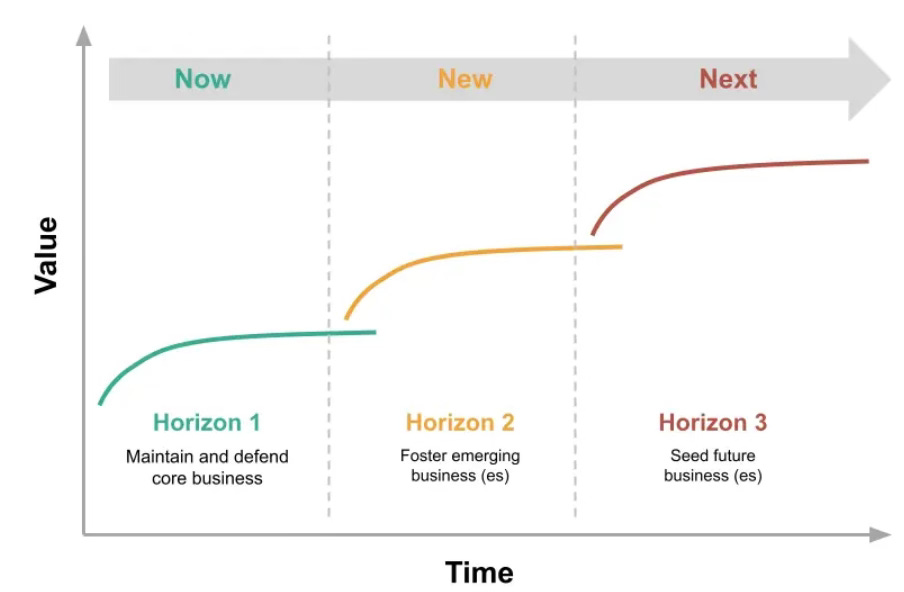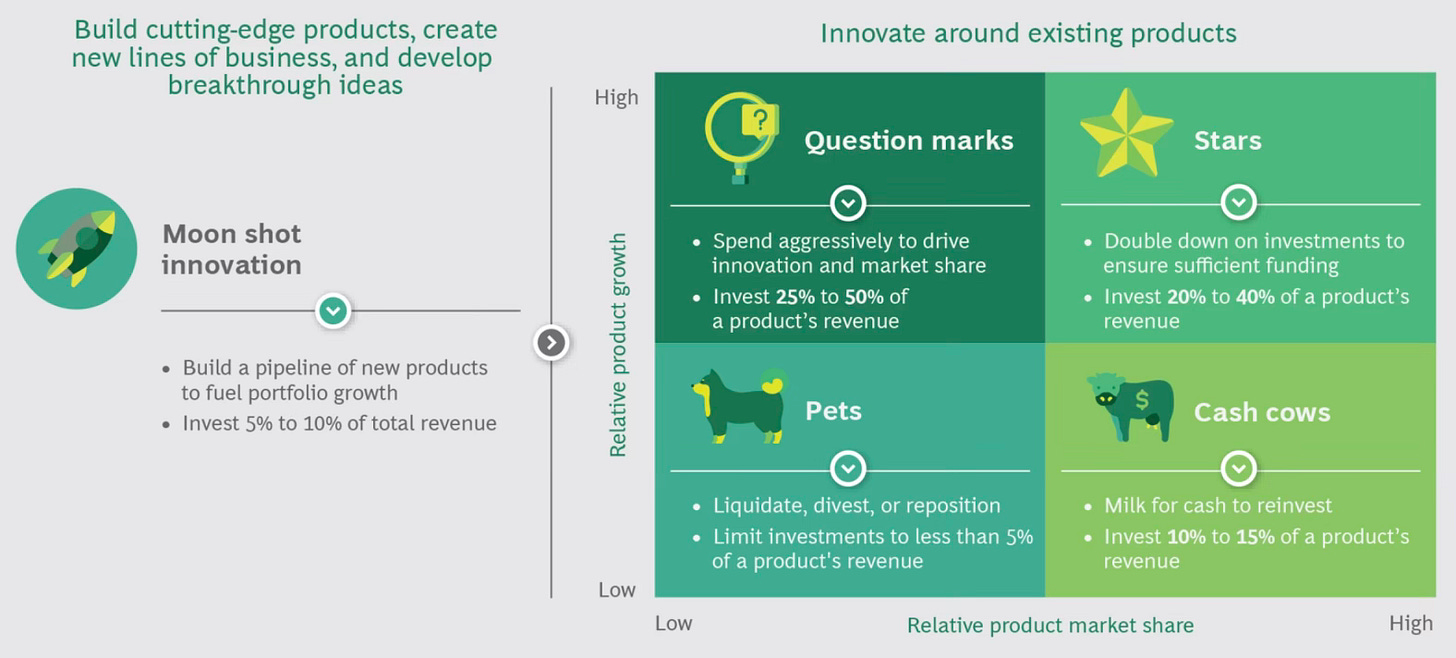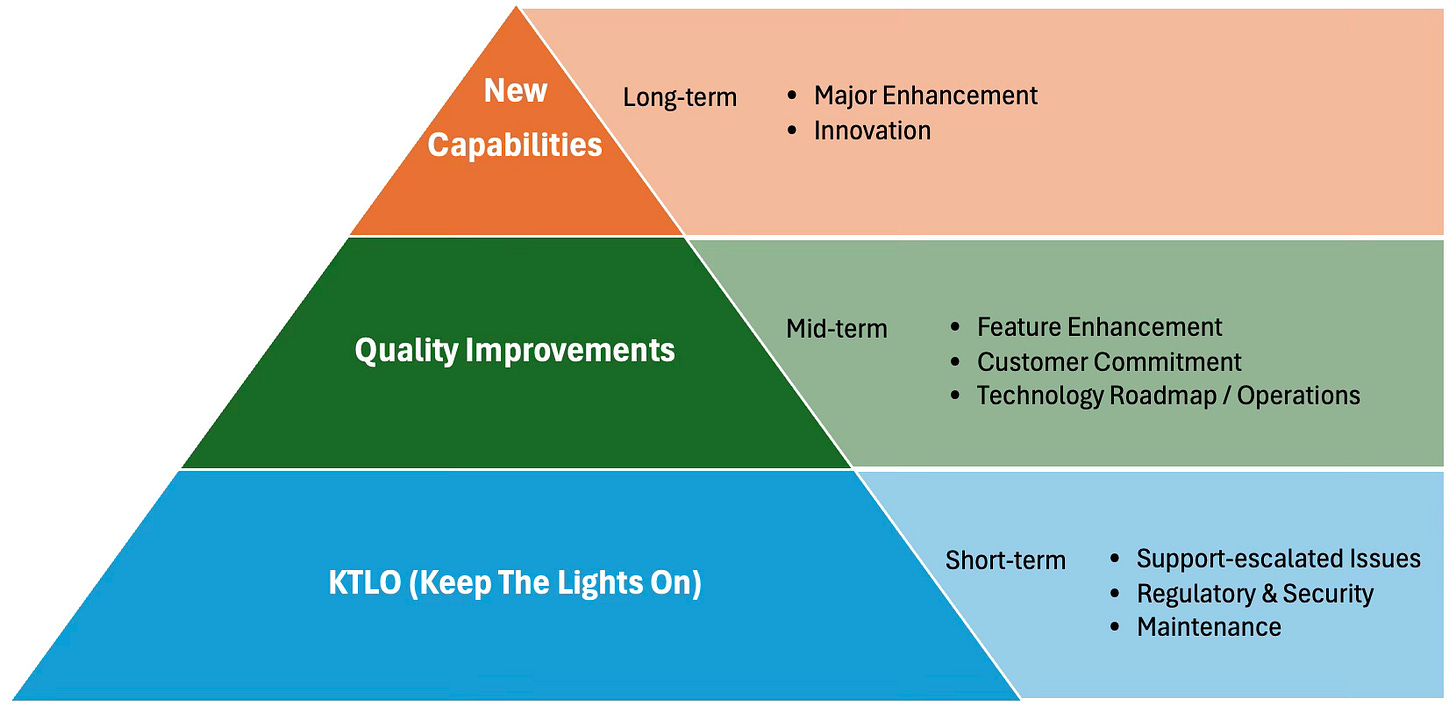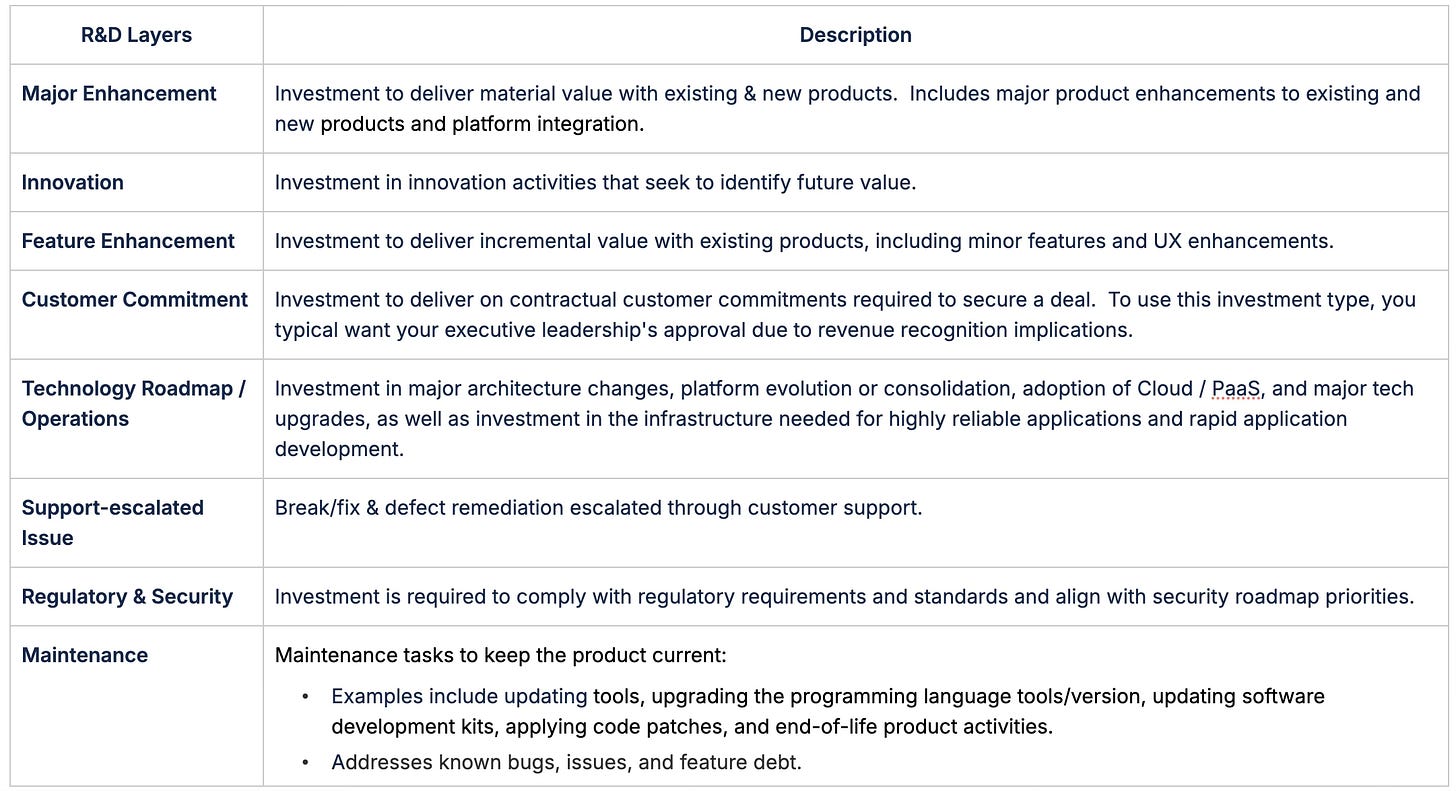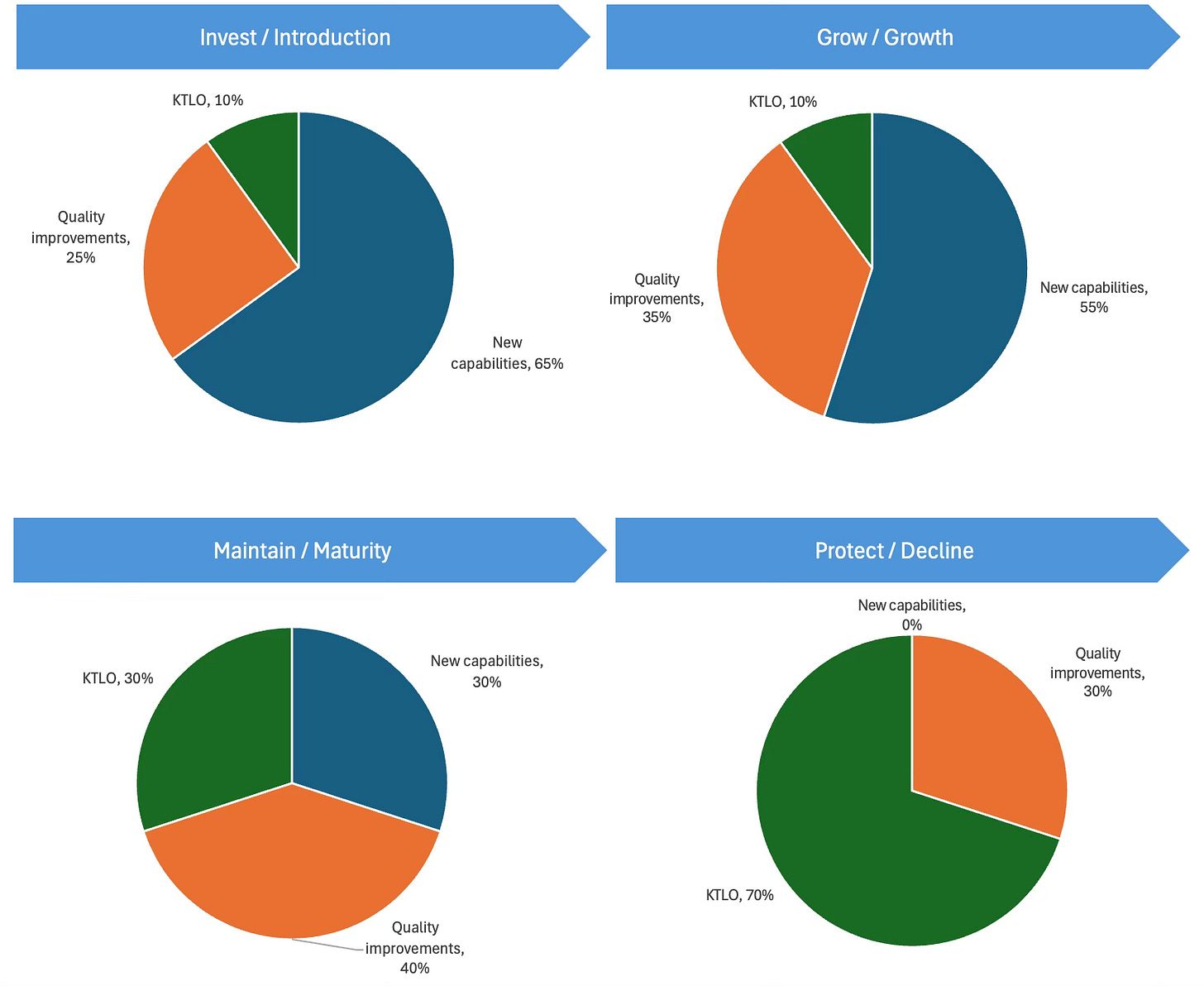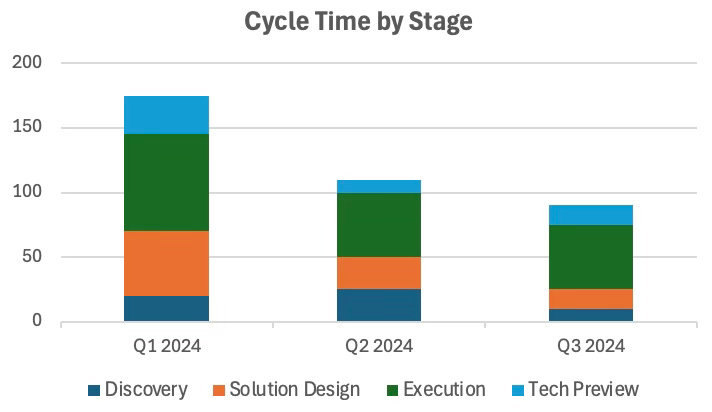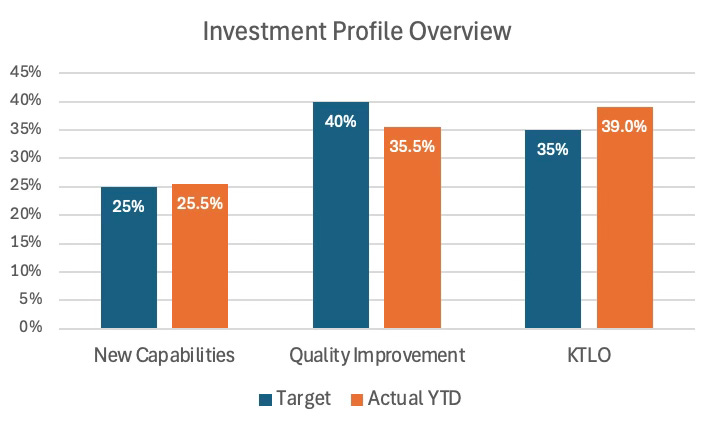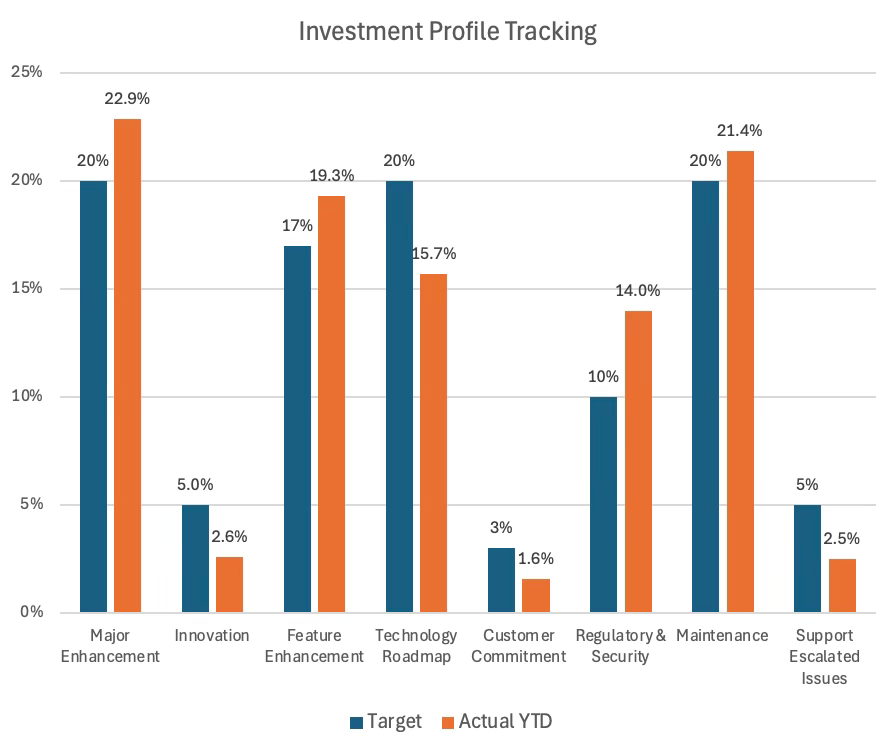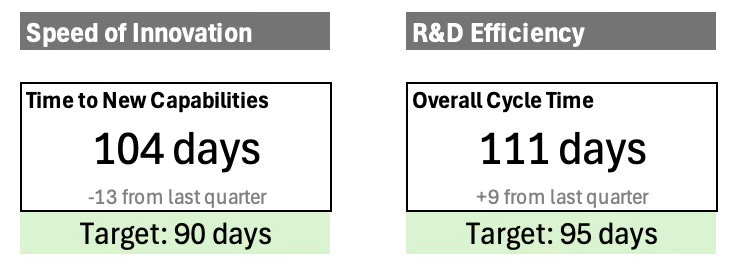Optimizing and Operationalizing R&D Investment Allocation: An Introduction to the Vista Layer Cake Framework
Exploring investments allocation frameworks and how to use them together
We previously covered an approach for organizing P&T teams effectively, leveraging the team of teams approach. This article continues our series on how Product & Technology leaders can effectively manage and scale their organizations and how P&T organizations' can better manage where and how much to invest in products.
We will cover established portfolio management frameworks and how they can help organizations make investment allocation decisions. We will then explore how these frameworks can be enhanced to provide better operational transparency and on-going allocation of investments. We will specifically explore the Vista layer cake framework from Vista Equity Partners which provides a powerful tool for managing detailed investment allocations and KPIs for P&T leaders to effectively communicate speed to innovation and overall R&D efficiency.
Portfolio Management Frameworks
Much has been written about frameworks for managing the lifecycle of innovation and portfolio investment allocations. These frameworks provide guidelines to ensure the most effective deployment of capital supporting today's and tomorrow's innovation.
McKinsey's Three Horizon Framework
McKinsey's Three Horizon framework, first introduced by Baghai, Coley, and White in 2000 in The Alchemy of Growth, provides a useful taxonomy for thinking through the S-curves of technology innovation and how to allocate investments:
Horizon 1: either maintains or protects a market position and invests in mature products that generate current profits. Investments focus on maintaining core value, scaling performance, and reducing operating costs.
Horizon 2: fosters growth and emerging businesses with products that have demonstrated early traction, poised for rapid growth. Managed like a Series A startup, prioritizing growth over profitability.
Horizon 3: seeds and invests in future businesses incubating new product concepts. Managed like seed-stage startups, with quick learning cycles and specific traction gates.
One of the flaws of this framework is its long-term horizon perspective. In today's rapidly changing technological landscape, this can be a fatal flaw that risks making companies lag competitors or worse. The trap of the Three Horizon model is not recognizing that, today, many disruptions can be rapidly implemented by repurposing existing Horizon 1 technologies into new business models, and that speed of deployment is disruptive and asymmetric by itself.
BCG's Growth-Share Matrix Framework
The BCG's growth-share matrix framework offers another approach, categorizing products into 4 quadrants based on growth and market share. One of the advantages of the BCG framework is that is allows organizations to further refine their horizon investments:
Horizon 1:
Stars: High-growth, high-market-share products.
Cash Cows: Low-growth, high-market-share products
Dogs: Low-growth, low-market-share products
Horizon 2:
Question Marks: High-growth, low-market-share products
Horizon 3:
Moon shot innovation: which builds pipeline for future growth
It can prove advantageous to use both the Three Horizons and Growth-Share Matrix framework together.
Operationalizing Investment Allocations with the Vista Layer Cake Approach
Once an organization has categorized its investments, it needs a framework to operationalize the management of these allocations. This is often overlooked and poorly managed. Left to their own devices, teams tend to over rotate on one area versus another.
The Vista layer cake approach provides a disciplined methodology for managing product investment allocation, tracking actual investment vs. target, and ensuring a balance investment approach aligned with your portfolio goals. In this write up, we describes a slightly adapted version of the Vista layer cake framework.
R&D Layers Definition
The Vista layer cake framework categorizes investments in 8 categories. We have adapted this framework to group investments into 3 top level categories describing investments in:
New capabilities with a longer-term horizon payback. Investments in this category are seeding the next wave of growth for a business.
Quality improvements with a short to mid-term horizon payback. These investments are focused on an incremental delivery of value to customers
Keep the Lights On with a short-term horizon payback. These investments are focus on addressed immediate issues and enabling an organization to continue to harvest an existing investment.
The 8 Vista layer cake investment categories are defined below:
Investment Allocation Guidelines
Investment allocations vary based on the product lifecycle stage and the context of the organization and products. The guidelines below show how investment allocations change as product mature in their lifecycle stage and should be adapted to the specific of your organization.
New investments focus primarily on new capabilities while mature investments take a much more balanced approach across new capabilities, quality improvements and maintenance.
Practical Application: Tracking Cycle Time
To implement the Vista Layer Cake methodology effectively:
Ensure proper tagging of work items (e.g., in Jira)
Track cycle time for each investment category
Measure Time to Innovation and time spent in various lifecycle stages
Cycle time represents the time to value for a given investment. When done properly, it enables an organization to measure its Time to Innovation, and how much it invests in each phase of the development lifecycle: discovery vs solution design vs execution, etc.
Using this level of instrumentation, portfolio teams can proactively manage and track their investment allocation aligned with their strategy and target allocation. Below is an example of detailed tracking for a mature product:
Cycle Time as a Key Performance Indicator
Cycle time serves as a valuable metric for Product & Technology organizations, providing:
Clear communication of organizational efficiency
Ability to track time to market and to outcome for innovations
A basis for continuous improvement
For example, an organization might aim for 90-days for achieving outcomes for major new capabilities while currently tracking at 104 days. Knowing this information enables the organization to identify bottlenecks and drive continuous improvement.
Applying the R&D Layer Cake to Different Organization Scopes
For larger product or organizations, the Vista layer cake framework can be applied to specific domains, differentiating between mature areas and those driving new growth and expansion. This allows for tailored investment profiles based on the maturity of services managed within each domain.
Conclusion
The Vista Layer Cake framework offers a comprehensive and flexible approach to managing product investment allocation. By providing granular insights into resource allocation and enabling data-driven decision-making, this methodology empowers organizations to optimize their investment strategies and drive innovation effectively.


